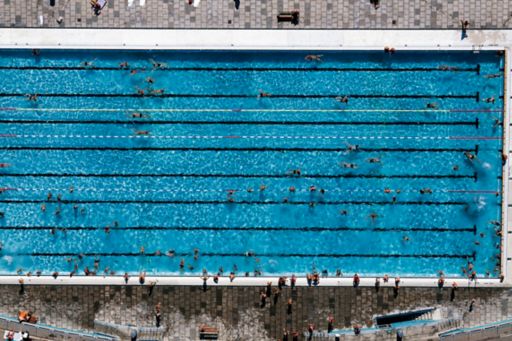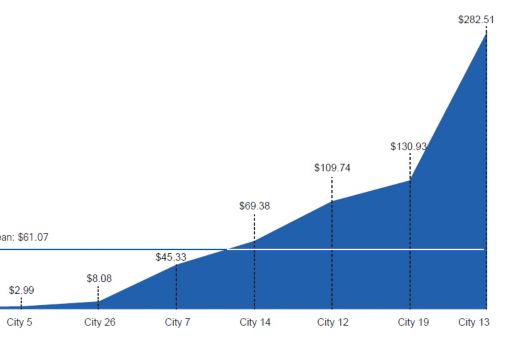Recreational facility access
Recreational facility access
Recreational and sports facilities add to a city’s quality of life.

Recreational and sports facilities add to a city’s quality of life. They encourage socialization, healthy living and civic participation. They celebrate culture, bring people together and build community cohesion. But — as demographics shift and assets age — many municipalities seem to be struggling to forecast and then deliver against current and future demand.
Defining the service
Recreational Facility Access refers to city-owned recreational facilities such as buildings, swimming pools, community centers, sports fields and arenas. For this report, we made a distinction between recreational facility access and recreational programming.
Topline findings
The average city spends around US$46 per program participant. The average city generates around US$19 per hour of facility usage (although many report no revenues at all). Labor and utility costs account for the greatest variances.
Efficiency
Cost of recreational facilities per hour. This measure reflects the cost per hour of recreational facility per program hour of operation. This cost is equal to the operating and capital cost of designing, building, operating and maintaining recreational facilities divided by the hours of program usage of the recreational facility. Recreational facility/program usage is the number of hours of operation of the facility and programs.
Points to consider:
- Of nine cities reporting costs, one city reported costs of less than US$1 while another reported costs in excess of US$270 per hour of recreational facility usage. Further examination of both city submissions did not reveal any evidence of incorrect reporting. However, dropping these two outliers results in an adjusted mean of US$114 per hour of recreational facility usage.
- When operating and capital costs are separated, one city reported extremely low operating costs versus its capital expenditures raising questions about whether the costs they reported may be in error. Setting aside observations out of the norm, cities report between 5–40 percent capital of total costs. Costs for any given year may be influenced by a significant capital expenditure. Ideally a five year average would normalize such fluctuations.
- Different cities provide different features in their recreational facilities. For example, some cities might provide swimming pools, gymnasiums, ballparks, ice rinks, etc. while others might provide fewer features. Different facilities have different costs and the proportion of more expensive facilities will obviously tilt them towards the higher cost side of the graph.
- Despite efforts to separate the costs of recreational facility access from recreational programming cities have clearly combined the two in their cost submissions. This may be a result of the challenge they have in separating the costs.
- Can cities maintain, on average, their recreational facilities at US$110–115/hour of recreational facility usage? If so then are they charging revenue to offset this hourly charge sufficient to cover these costs? The answer is that many cities do not, particularly given the fact that they provide these facilities to level the playing field for those participants who can ill afford to pay for privately operated facilities.
Operating and capital cost per hour of recreational facility usage (US$)

Cost of recreational facilities per program participant. This measure reflects the operating and the capital costs less revenue for the recreational facility service and divides the costs by the number of recreational program participants.
Points to consider:
- Eight cities reported the cost per program participant — a slightly different perspective on efficiency from the cost per hour of recreational facility usage. Costs range from a low of US$2 to a high of US$280. On average the cost per participant was US$61. The intention behind this indicator was to illustrate the true cost of servicing program participants regardless of the fee that may be charged to recuperate costs.
- This indicator does not refer to the city providing the programs but rather to other organizations, such as football, hockey, baseball and cricket clubs, running the programs within a city facility. A key component in the formula for this indicator is the number of participants. These participants would be the registrants in the clubs’ programs and not all cities capture this information.
- In future, capturing both the participants and the attendees will help to clarify this distinction. However, if the number of participants actually reflects attendees and not participants, then the implication would be a much lower cost as reflected in some of the calculations.
- Variations in cost may be explained by a city that included a large capital cost in their reporting year which would have translated into an overall higher cost per participant.
- As costs to run facilities begin to mount year over year, the challenge for recreation departments is to balance the challenge of recovering as much of the costs as possible through fees while not restricting participation in recreational activities which is a key outcome of the recreation program.
Operating and capital cost per program participation

Effectiveness
We would have liked to capture data around effectiveness, specifically on revenue generated per hour of usage. Many cities either did not monitor this data or did not have it readily available at this time.
Persistent problems
- Limited capital budgets
- Natural resource (particularly water) scarcity
- Low public awareness
- Inconsistent access to facilities
- Aging infrastructure and equipment
- Legacy back office technologies
- Facility renovation and revitalization Common cost factors
- Labor costs and benefits
- Type of facilities and sophistication of Assets
- Degree of asset depreciation and associated capital costs
- Equipment and supply costs
- Asset renovation and rejuvenation requirements
- Service level requirements or volume
Innovative ideas
To ease the strain on existing sports facilities, Mornington Peninsula created a partnership with local schools where access to grounds is provided in exchange for maintenance and capital works.
Moscow’s digital Leisure and Recreation services portal allows citizens to sign up for clubs, register for events, provide feedback and vote for the creation of new clubs and services.
Recognizing growing water constraints, Cape Town’s recreational facility leaders have installed water-efficient ‘spray parks’ and synthetic sports fields across the city.
Sunshine Coast Council, where pools represent a key service, operations are delivered by outsourced service providers, and tenure renewals are aligned to management models.
Mississauga is creating operational innovation through its IT Roadmap that, amongst other benefits, better connects residents with recreational programs and services.
